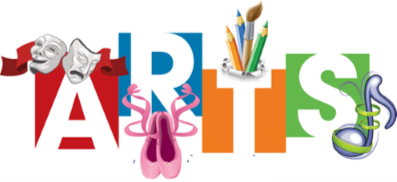At PSPC we understand the importance that the arts has on a child’s development. Today’s children are constantly surrounded by stimuli and information that make attention and concentration difficult. Usually, the stimuli that attract the most attention are those that have nothing to do with school. So, we have to get students to feel interested in academic content. Studies have shown that art can improve their attention. The arts teaches children that real problems usually have more than one possible solution, that it is necessary to analyse tasks from different perspectives, that imagination is a powerful guide in resolution processes or that there are not always defined rules when they have to make decisions.
When artistic disciplines are integrated into teaching practices, creative and divergent thinking is promoted in students and they develop deeper thinking. Neuroscience is showing that artistic activities involving different brain regions, particularly musical, promote the development of cognitive processes.
The Australian Curriculum: The Arts offers students the opportunity to study all five subjects in the primary years of schooling.
At PSPC we value the Arts, hosting an annual Arts Show, showcasing the works of our students and staff across the 5 strands of the arts for our community. We harness the creativity of our students and staff to create an end of year concert, acknowledging the great work we do together.
Music
Our music program focusses on the concepts and materials of music to compose, improvise, arrange, perform, conduct and respond to students own and others’ work. They learn the elements of music including duration (rhythm and tempo), dynamics, form, pitch (melody and harmony), and timbre (sound texture and quality). Students apply this knowledge to the materials of music, including the voice, body, instruments and found sound sources (natural and manufactured objects including stones, household objects and so on).
Watch a video to see students learning various dances in Week 6 of Term 3, 2021 (note: due to size, the video will download first before playing)
Strings
All students in Year 2 go through a recruitment process and are tested for their musical aptitude. Students demonstrating a high level of musical skills will be invited to participate in the program at the commencement of the following year.
If students in Years 3-6 wish to join the program they will need to meet certain criteria. Please see Mrs Filkorn or email
sfilk1@eq.edu.au if you are interested.
Tuition offered in this program includes violin, viola, cello and double bass. Students may hire cello or double bass from PSPC if available. Students playing violin or viola will need to supply their own.
Choir
At PSPC our choirs encourage students to learn and perform songs at school and in public. We have a Year 1- 2 choir and a Year 3-6 Choir. Both choirs require a year long commitment and all students are welcome to join their respective choir. Preps may have the opportunity to join the 1-2 choir for end of year performances.
Dance
In dance, students will develop knowledge, understanding and skills to communicate ideas using the elements of dance, including space, time, dynamics and relationships. They will work with the body as the instrument and movement as the medium of dance, using dance composition processes to explore, organise and refine movement for choreography and performance.
Drama
In drama, students explore, depict and celebrate human experience by imagining and representing other people through live enactment. Drama is a collaborative art, combining physical, verbal, visual and aural dimensions. In drama students experience theatre and develop an understanding of the performer/audience relationship.
The PSPC Drama club has developed and performed performances for our art shows and end of year concerts.
Media Arts

In media arts, students develop knowledge, understanding and skills in the creative use of communications technologies and digital materials to tell stories and explore concepts for diverse purposes and audiences. Media artists represent the world using platforms such as television, film, video, newspapers, radio, video games, the internet and mobile media. Produced and received in diverse contexts, these communication forms are important sources of information, entertainment, persuasion and education and are significant cultural industries.
Visual Arts
In visual arts students learn through direct engagement with two-dimensional, three-dimensional and four-dimensional art and design practices and concepts, theories, histories and critiques. They develop skills, knowledge, understandings and techniques as artists, designers, critics and audiences. Students learn to explore ideas through imaginative engagement, making and presenting art, craft and design works, and engaging critically with these works and processes.